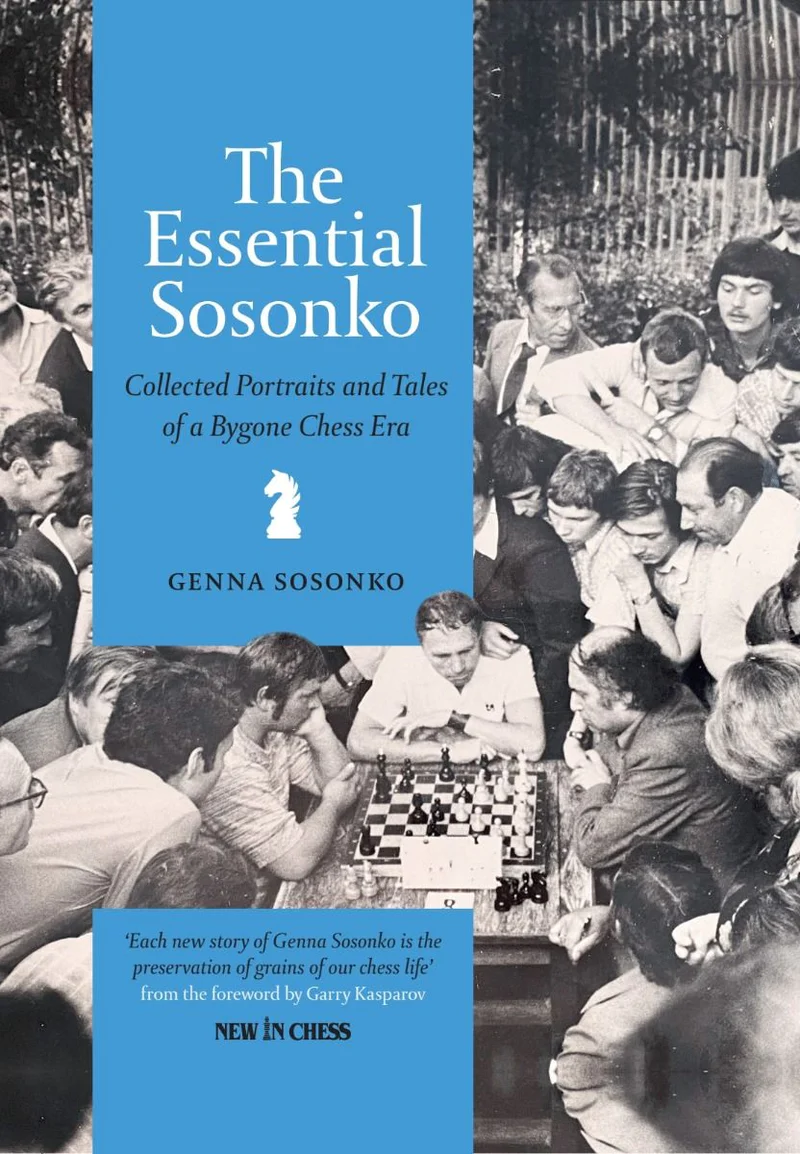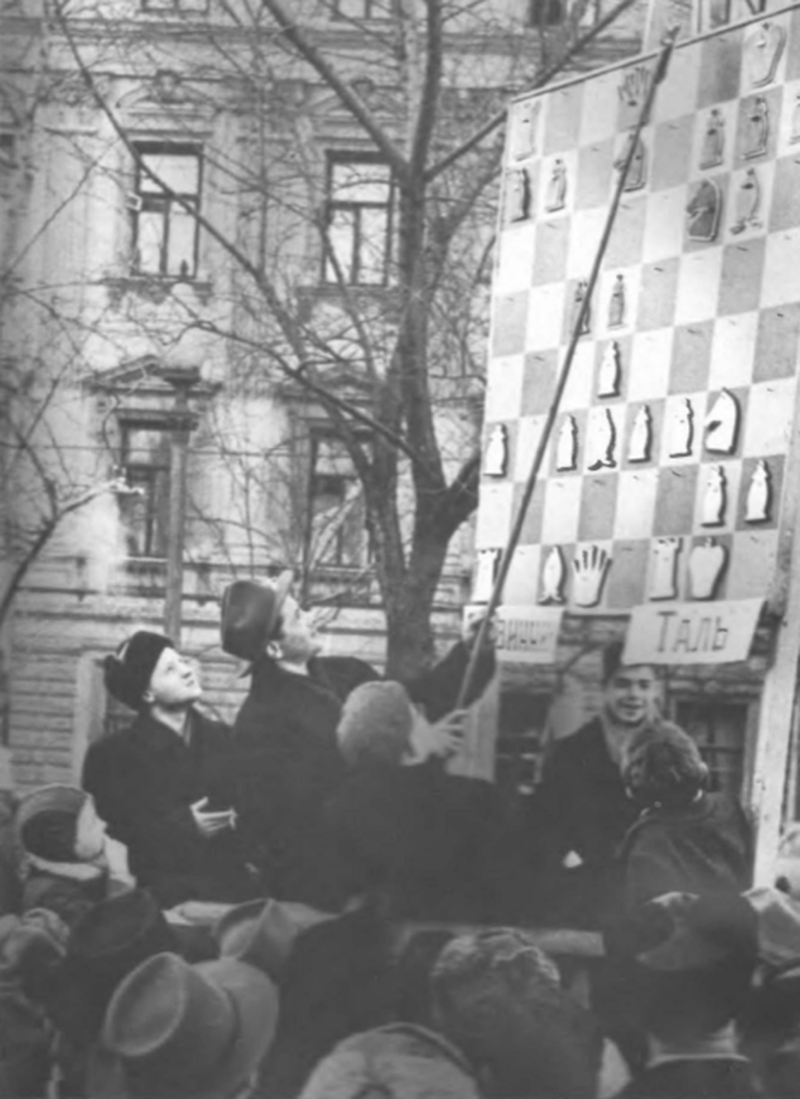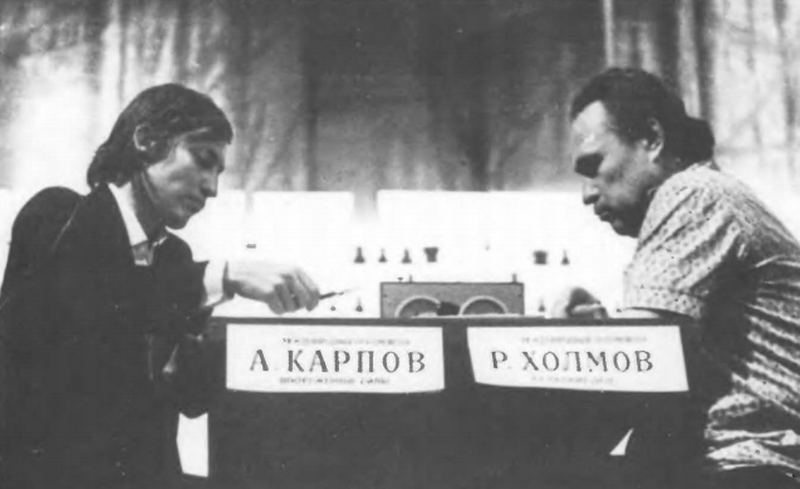
Genna Sosonko chess essays
"Portraits and Tales of a Bygone Chess Era"One day I read a thread on chess burnout: someone was asking about chess-related activities that still feel good even when one is burnt out. One of the suggestions stuck with me and it is diving into chess history: famous tournaments, chess biographies, essays, stories. In this post I want to share my impressions about Genna Sosonko’s collection of essays which is, I believe, a crown jewel of the genre.
I won’t be calling this a review, because this word entails to me a sense of criticism, assessing the author’s work, giving it a score, X out of 5, Y out of 10. Am I a qualified critic? I am not, I’m just a reader, so I will share my impressions, the things that I can vividly remember, maybe some quotes and photographs. Also, I probably wouldn’t even bother writing about books that I didn’t really like — and I just wouldn’t finish them — and thus it wouldn’t make sense to assign 5/5 in all my “reviews”.

Genna Sosonko is a strong Dutch Grandmaster who emigrated from the Soviet Union in early 1970s. Then he played for the Netherlands team in Chess Olympiads, and won the prestigious Wijk aan Zee tournament in 1977. He also played mini-matches against Jan Timman and Max Euwe, but most importantly he personally knows many chess legends and is an excellent writer.
His books are collections of essays: each one is dedicated to a single person. Some are really famous: Mikhail Tal, Mikhail Botvinnik, Max Euwe and other world champions — whom Genna knew plenty, the others are less so: Alexander Koblentz, Ratmir Kholmov, Viktor Baturinskiy. The essays often do not follow chronological order (born here, played in such and such tournaments, became a world champion in year Y). They are not biographies per se, they are more like impressions by the author: a string of relevant stories, sometimes based on the interviews recorded on tape, or on multiple personal encounters with their protagonists. Essays contain no actual chess material: no diagrams or games, which makes perfect sense for this format. Of course, the author could make it more attractive to chess players by including a couple of games “to illustrate” the stories, but that’s definitely not his goal.
Sosonko is a good writer, his writing is romantic or even melancholic at times, which is something that particularly resonated with me. He describes his characters from multiple points of view, citing opinions of their friends and foes, and often giving voice to the persons themselves by quoting them. We can see that all people are really multifaceted: even supposedly strict and rigid Botvinnik can be friendly, drink a glass of red wine and invite you to his “dacha”, and even Communism-admirers may see issues with the system. Some of the stories are tragic: the chess world has its share of mentally unstable people, and probably the obsession with chess and struggling with making progress doesn’t make it easier.
One of the stories I remember the most is about Capablanca. Wait, is Sosonko old enough to know Capablanca? No, he is not, but he knew his widow Olga Capablanca, who outlived Capablanca for 52 (!) years. Genna met her many times in New York, so Capablanca’s story is based on her words. Olga didn’t know much about chess, but of course she knew Capa well. Once Olga didn’t feel well and when Savelly Tartakower came to visit them in a hotel in Paris — Capablanca proposed to stay at home and play a game. They played a game, which was rare, because Capablanca almost never played in private these days. And then he gave the scoresheet with the game to Olga, saying: “Keep this, it may bring you a fortune some time later”. She kept the scoresheet and put it on sale much later, in 1987. Unfortunately, there was no one willing to buy it for $10k at the time, probably chess history aficionados are not that rich. You can read more about Olga and see the scoresheet on Edward Winter’s website. Edward was actually the person whom Olga contacted about selling the scoresheet.

There are even several essays about Tal. Of course, being such a colourful character he deserved that. Also, Sosonko was his friend, so he had a lot to tell. Tal is a mesmerising figure. Sosonko doesn’t hide his alcohol and drug addiction — which, to be honest, was terrifying — but also focuses on his sense of humour and his energy. There are many quotes and jokes from Tal. I didn’t find many of them particularly funny, but some are catchy. The one that I liked the most is Tal’s comment after his opponent moved the knight back to the first rank: “Preparing the pieces for the next game!”

Another story was not about a particular person, but about the whole subculture of chess amateurs spending their days in the Central Chess Club in Moscow. I found particularly entertaining their special slang: words and expressions used for friendly banter during blitz games. Those funny phrases were a mix of quotes from books, movies, comments on current political events intertwined with the realities on the chess board. It’s hard to translate them to English, but I hope the translator did a good job (I read the essays in Russian). In this story, less famous people of the club got their share of attention: the cloakroom attendant, amateur patrons of the club, coaches.
Yet another memorable essay is the story of Ratmir Kholmov, a grandmaster not well known in the West. He was considered particularly skilled in defence, “The Central Defender”. He has an interesting name — Ratmir — it sounds very ancient because it’s the name of a “bogatyr” (basically, a knight) from epic Slavic folk-tales, and suits his defender’s reputation. What I found particularly impressive that Ratmir had an unusual background for a Soviet chess player: he didn’t even finish his secondary education, had a criminal background in his teenage years, served as a sailor, was captured by Japanese on his ship before the war (that probably explains why he was not allowed to play in the West). He also didn’t study much chess, just played, and with all of this he managed to share the first place in the Soviet Championship in 1963, along with Spassky and Stein! Reading excerpts from his interview was particularly illuminating because of his unusual background. Ratmir’s comment on his defensive skills: “Of course, you will need to defend well, when you are constantly outplayed in the opening”, referring to his opponents usually much better prepared in opening theory.

Recently I was watching an online translation from the 2024 Wijk aan Zee tournament, the camera was focused on Ian Nepomniachtchi thinking on his move. Then Ian unexpectedly stood up and shaked hand of a grey-headed gentleman who was passing by, looking at the boards. That man was Genna Sosonko, and it was a sign of respect from Ian.
I sometimes read Genna’s essays at night, when I was waking up randomly, worrying about something. Perhaps, that was not a good idea, because the essays are definitely not boring, so they didn’t put me back to sleep, not at all. But they were an excellent way to distract myself, and get into the wonderful world of chess personalities and folklore. Now I have a feeling that some of those people are almost like friends, I respect them for their words or deeds even if I don’t share their beliefs. Some of them are less so, probably I wouldn’t want to invite them to my place for a cup of tea. But almost everyone is fascinating, and that’s partly because of Genna’s skill.
Originally published in my blog "64 Squares"

